[javascript protected email address]
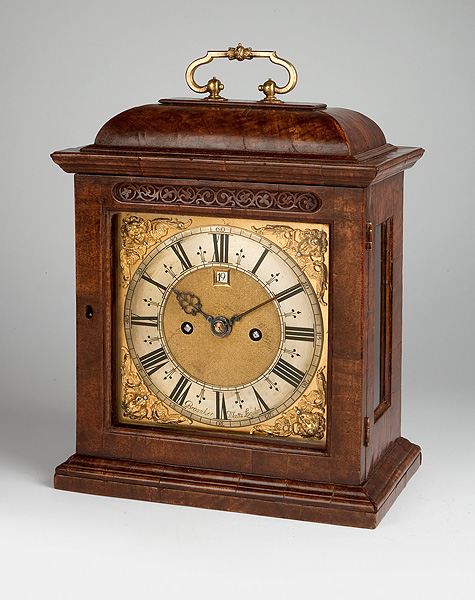
Brounker Watts, London

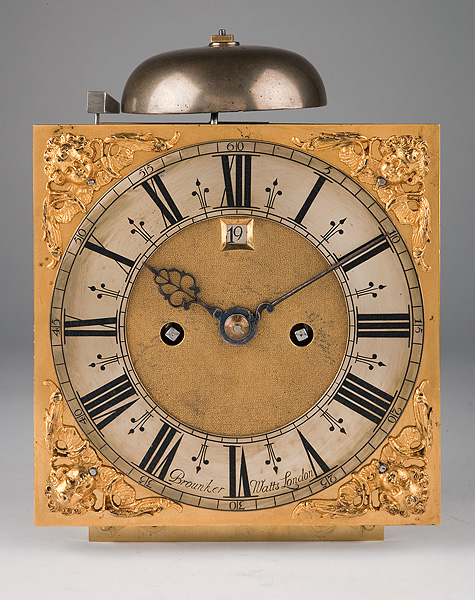
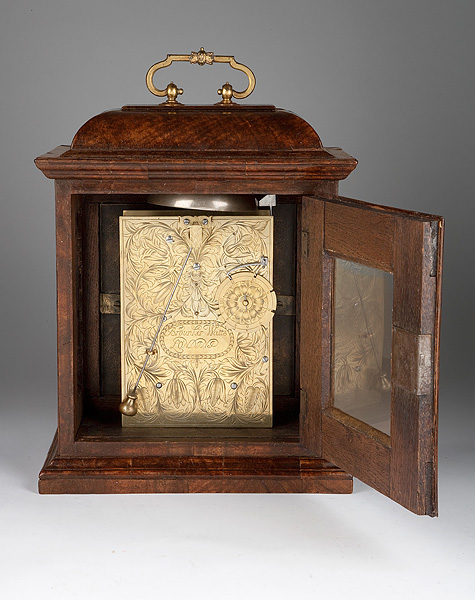
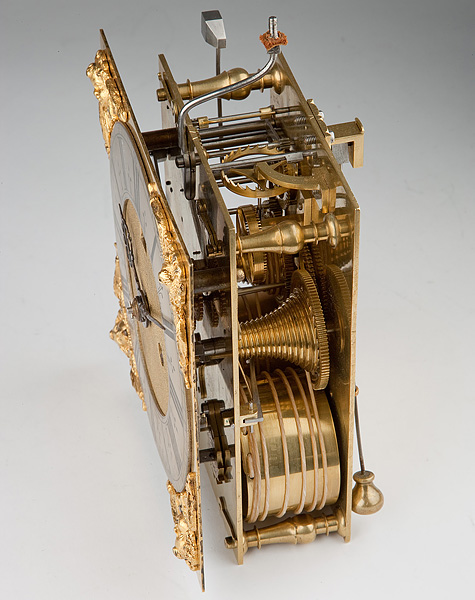
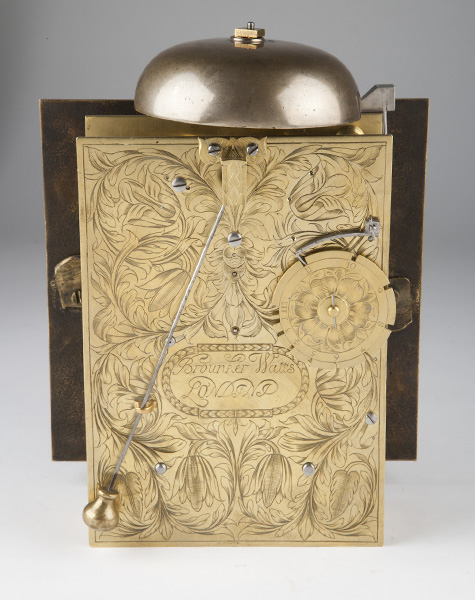
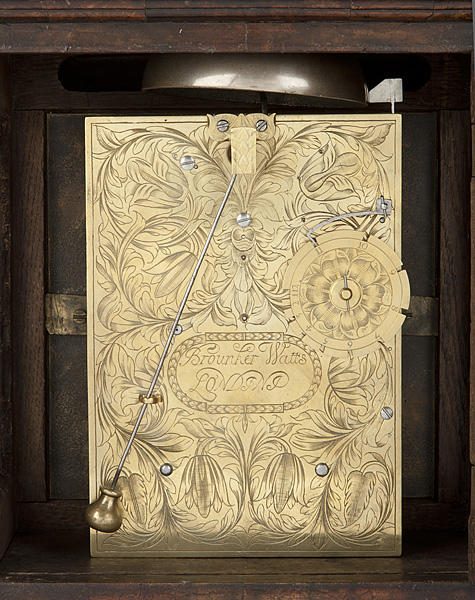
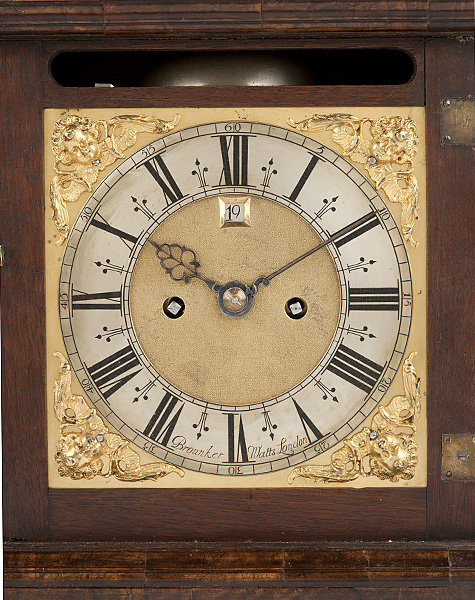
Circa 1685
Sold
12½ inches high
A fine walnut countwheel striking table clock. CASE The domed top is surmounted by a Knibb-style foliate-tied gilt-brass handle, the sides are glazed and the base rests on a solid flat plinth. DIAL The 6 ½ inch square gilt-brass dial is signed Brounker Watts London on the silvered Roman and Arabic chapter ring with trident half hour makers. The matted centre is inset with a calendar aperture and the blued steel hands are finely pierced and scalloped in the Knibb style. MOVEMENT There are latches for the dial feet and also for the five vase-shaped pillars of the movement, which has twin gut fusees. The going train has a restored knife-edge verge escapement with a neat foliate engraved backcock. The strike train has a calibrated and rosette-engraved countwheel that is mounted on the backplate and the hours are struck on a bell above the plates. The backplate is engraved with tulip heads and scrolling foliage and the centre signed Brounker Watts London within a wheatear oval reserve. The movement is secured to the case by means of two turnscrews on the inside of the dial plate. Provenance • Private collection, Essex Brounker Watts served his seven-year apprenticeship under the tutelage of Joseph Knibb from January 1684 to February 1691. He was made Free of the Clockmakers Company in 1693 and worked in Fleet Street. In 1711 he avoided Stewardship of the Company because he was ‘out of town’ and was not recorded thereafter, presumed died. The movement, and particularly the dial of this lovely clock, bears close resemblance to his master’s work. Joseph Knibb’s workshop ethic and standards were patently very strong; as many of his illustrious apprentices, including Patrick Vans, Edmund Massey and John Drew also continued to adopt Knibb’s lovely delicate style of clockmaking.
